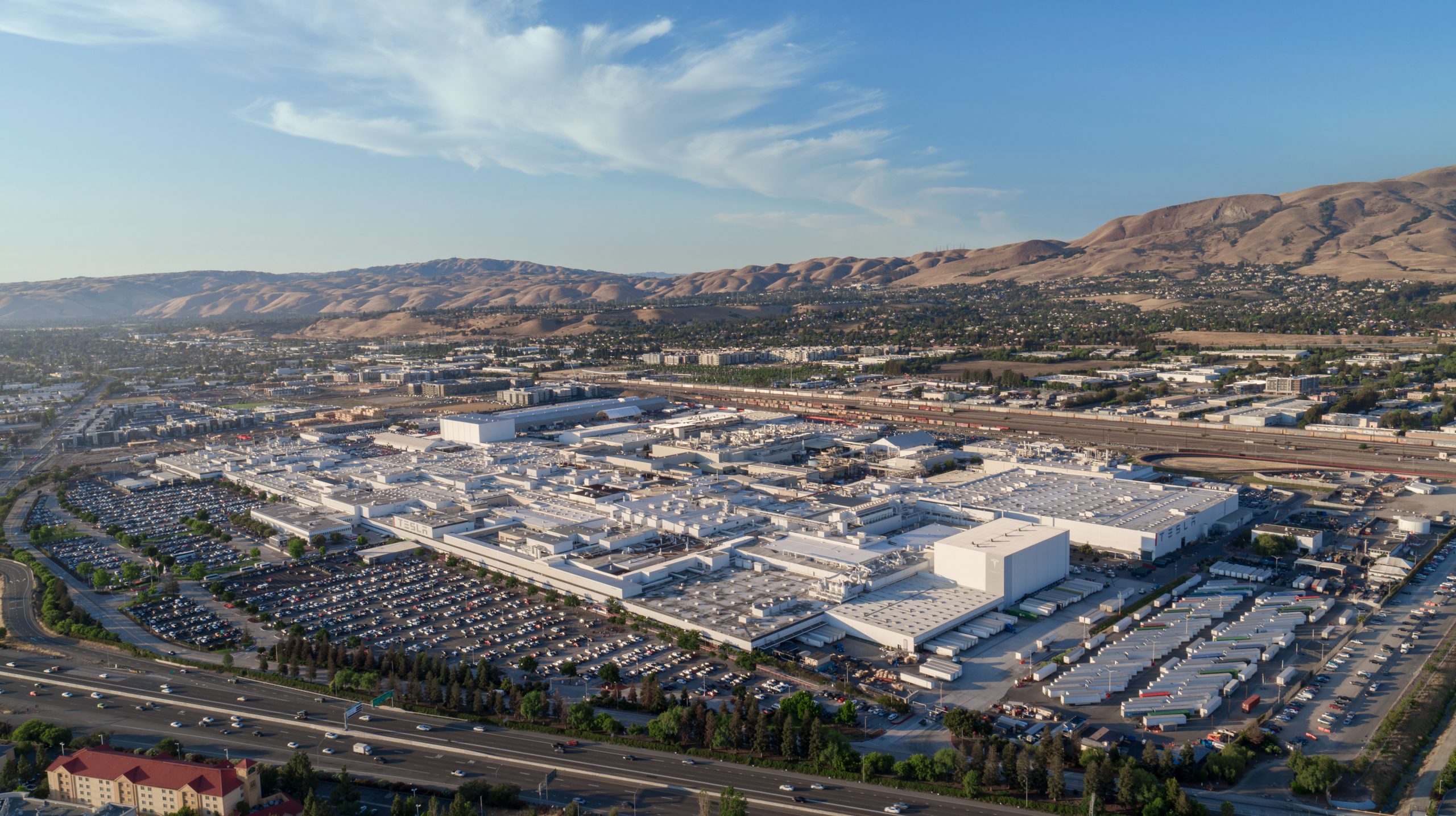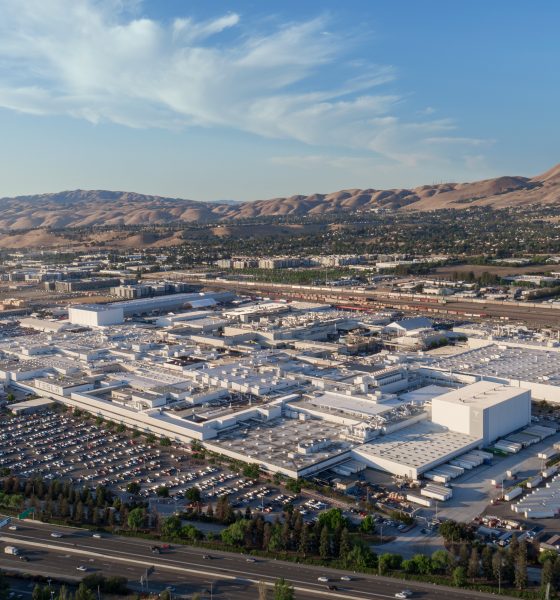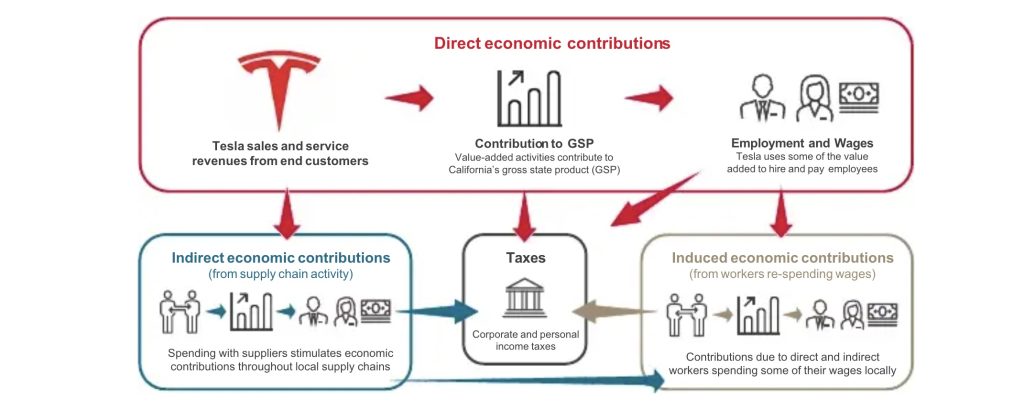

News
Tesla generated $44.4 million of economic activity for CA every day in 2021: IHS Markit
A recent post from Tesla has outlined a number of key insights about the electric vehicle maker’s footprint in California. While Tesla currently lists Gigafactory Texas as its headquarters, the Golden State will always be the place where the company grew and hit its momentum. And based on a report, Tesla has provided substantial economic activity for California over the past few years, generating $44.4 million of economic activity every day in 2021.
Tesla was founded in San Carlos, California, 20 years ago, and since then, the company has grown into the world’s undeniable leader in electric vehicles and the state’s largest manufacturing employer. As noted by Tesla in its recent post, its California footprint today is comprised of “Megapack production and vehicle castings in Lathrop, hardware and software engineering in Palo Alto, vehicle and battery manufacturing in Fremont, battery development and testing in San Diego and vehicle design in Hawthorne.”

These facilities have had a large impact on California’s employment, wages, gross state product, and taxes. This became particularly notable over the past decade, with Tesla-supported jobs in the state increasing by 40% from 2018 to 2021. Tesla’s 2021 wages also exceeded the state average by 50%, a notable number considering the narrative painted against the company due to its non-unionized workforce.
As per a report from IHS Markit, Tesla’s contributions to the California economy can be summarized in the following section:
Supported an average of 59,440 jobs from 2018 to 2020, rising to 80,484 jobs in 2021
- In 2021, this represented 0.5% of California employment or 1 out of every 208 jobs
- For every 100 direct Tesla jobs, 50 more were supported in the supply chain and 68 by follow-on consumer activity
Stimulated economic activity (sales) of $16.6 billion in 2021 was 40% higher than the 2018 to 2020 average of $11.9 billion
- This was equivalent to generating $44.4 million of economic activity every day in 2021
- Tesla’s direct sales rose from $5.7 billion in 2018 to $7.4 billion in 2021
- Tesla directly spent over $1.6 billion with California suppliers in 2021, which triggered another $900 million in supply chain sales activity
Contributed $10.4 billion or 0.3% of California’s gross state product (GSP) in 2021
- This was 42% higher than Tesla’s 2018 to 2020 average GSP contribution of $7.2 billion.
On average, $1.0 million of Tesla’s revenue in California converts to $1.5 million in GSP
Stimulated an average annual wage of $128.6K in California during 2021
- This was 50% higher than the CA average annual wage of $85.7K
Approximately 30% of the economic contributions were stimulated by the local consumer spending of Tesla and its suppliers’ employees
Generated a total of $1.5 billion in California state & local taxes plus federal $2.5 billion in federal taxes from 2018 through 2021
Last year, Tesla’s economic contributions to California were still impressive, with the company growing its headcount to 47,000 employees in the state. That’s still a significant number, considering that California is no longer the state that hosts the electric vehicle maker’s headquarters. That being said, Tesla executives have noted in the past that despite Tesla’s expansion, the company would continue to grow in California, just as revealed in IHS Markit’s report.
IHS Markit’s report on Tesla’s impact on California’s economy from 2018 to 2021 can be viewed below.
Tesla California Economic Impact Final Report October 2022 by Simon Alvarez on Scribd
Don’t hesitate to contact us with news tips. Just send a message to simon@teslarati.com to give us a heads up.

News
Tesla FSD fleet is nearing 7 billion total miles, including 2.5 billion city miles
As can be seen on Tesla’s official FSD webpage, vehicles equipped with the system have now navigated over 6.99 billion miles.

Tesla’s Full Self-Driving (Supervised) fleet is closing in on almost 7 billion total miles driven, as per data posted by the company on its official FSD webpage.
These figures hint at the massive scale of data fueling Tesla’s rapid FSD improvements, which have been quite notable as of late.
FSD mileage milestones
As can be seen on Tesla’s official FSD webpage, vehicles equipped with the system have now navigated over 6.99 billion miles. Tesla owner and avid FSD tester Whole Mars Catalog also shared a screenshot indicating that from the nearly 7 billion miles traveled by the FSD fleet, more than 2.5 billion miles were driven inside cities.
City miles are particularly valuable for complex urban scenarios like unprotected turns, pedestrian interactions, and traffic lights. This is also the difference-maker for FSD, as only complex solutions, such as Waymo’s self-driving taxis, operate similarly on inner-city streets. And even then, incidents such as the San Francisco blackouts have proven challenging for sensor-rich vehicles like Waymos.
Tesla’s data edge
Tesla has a number of advantages in the autonomous vehicle sector, one of which is the size of its fleet and the number of vehicles training FSD on real-world roads. Tesla’s nearly 7 billion FSD miles then allow the company to roll out updates that make its vehicles behave like they are being driven by experienced drivers, even if they are operating on their own.
So notable are Tesla’s improvements to FSD that NVIDIA Director of Robotics Jim Fan, after experiencing FSD v14, noted that the system is the first AI that passes what he described as a “Physical Turing Test.”
“Despite knowing exactly how robot learning works, I still find it magical watching the steering wheel turn by itself. First it feels surreal, next it becomes routine. Then, like the smartphone, taking it away actively hurts. This is how humanity gets rewired and glued to god-like technologies,” Fan wrote in a post on X.
News
Tesla starts showing how FSD will change lives in Europe
Local officials tested the system on narrow country roads and were impressed by FSD’s smooth, human-like driving, with some calling the service a game-changer for everyday life in areas that are far from urban centers.

Tesla has launched Europe’s first public shuttle service using Full Self-Driving (Supervised) in the rural Eifelkreis Bitburg-Prüm region of Germany, demonstrating how the technology can restore independence and mobility for people who struggle with limited transport options.
Local officials tested the system on narrow country roads and were impressed by FSD’s smooth, human-like driving, with some calling the service a game-changer for everyday life in areas that are far from urban centers.
Officials see real impact on rural residents
Arzfeld Mayor Johannes Kuhl and District Administrator Andreas Kruppert personally tested the Tesla shuttle service. This allowed them to see just how well FSD navigated winding lanes and rural roads confidently. Kruppert said, “Autonomous driving sounds like science fiction to many, but we simply see here that it works totally well in rural regions too.” Kuhl, for his part, also noted that FSD “feels like a very experienced driver.”
The pilot complements the area’s “Citizen Bus” program, which provides on-demand rides for elderly residents who can no longer drive themselves. Tesla Europe shared a video of a demonstration of the service, highlighting how FSD gives people their freedom back, even in places where public transport is not as prevalent.
What the Ministry for Economic Affairs and Transport says
Rhineland-Palatinate’s Minister Daniela Schmitt supported the project, praising the collaboration that made this “first of its kind in Europe” possible. As per the ministry, the rural rollout for the service shows FSD’s potential beyond major cities, and it delivers tangible benefits like grocery runs, doctor visits, and social connections for isolated residents.
“Reliable and flexible mobility is especially vital in rural areas. With the launch of a shuttle service using self-driving vehicles (FSD supervised) by Tesla in the Eifelkreis Bitburg-Prüm, an innovative pilot project is now getting underway that complements local community bus services. It is the first project of its kind in Europe.
“The result is a real gain for rural mobility: greater accessibility, more flexibility and tangible benefits for everyday life. A strong signal for innovation, cooperation and future-oriented mobility beyond urban centers,” the ministry wrote in a LinkedIn post.
News
Tesla China quietly posts Robotaxi-related job listing
Tesla China is currently seeking a Low Voltage Electrical Engineer to work on circuit board design for the company’s autonomous vehicles.

Tesla has posted a new job listing in Shanghai explicitly tied to its Robotaxi program, fueling speculation that the company is preparing to launch its dedicated autonomous ride-hailing service in China.
As noted in the listing, Tesla China is currently seeking a Low Voltage Electrical Engineer to work on circuit board design for the company’s autonomous vehicles.
Robotaxi-specific role
The listing, which was shared on social media platform X by industry watcher @tslaming, suggested that Tesla China is looking to fill the role urgently. The job listing itself specifically mentions that the person hired for the role will be working on the Low Voltage Hardware team, which would design the circuit boards that would serve as the nervous system of the Robotaxi.
Key tasks for the role, as indicated in the job listing, include collaboration with PCB layout, firmware, mechanical, program management, and validation teams, among other responsibilities. The role is based in Shanghai.
China Robotaxi launch
China represents a massive potential market for robotaxis, with its dense urban centers and supportive policies in select cities. Tesla has limited permission to roll out FSD in the country, though despite this, its vehicles have been hailed as among the best in the market when it comes to autonomous features. So far, at least, it appears that China supports Tesla’s FSD and Robotaxi rollout.
This was hinted at in November, when Tesla brought the Cybercab to the 8th China International Import Expo (CIIE) in Shanghai, marking the first time that the autonomous two-seater was brought to the Asia-Pacific region. The vehicle, despite not having a release date in China, received a significant amount of interest among the event’s attendees.








